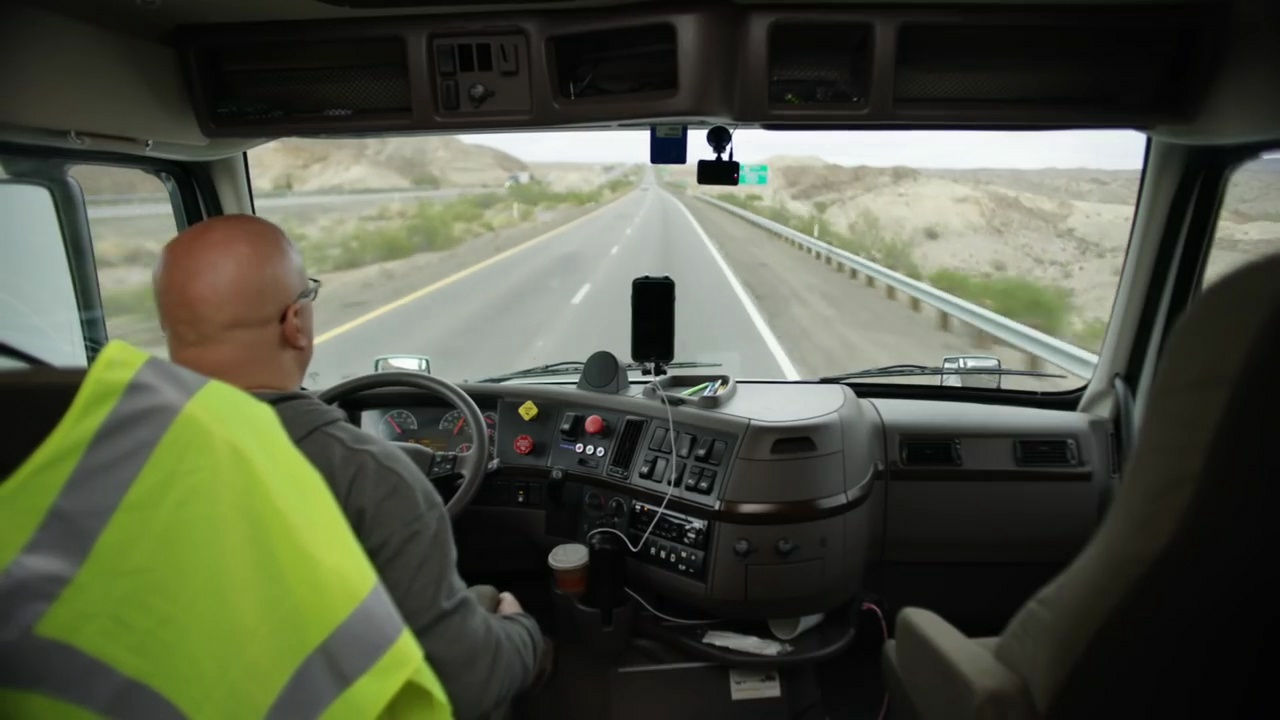The author of The Big Rig: Trucking & the Decline of the American Dream, Steve Viscelli spent over a decade studying the trucking industry and interviewing truckers. A sociologist, he is a Robert and Penny Fox Family Pavilion Scholar and a Senior Fellow at the Kleinman Center for Energy Policy at the University of Pennsylvania.
Viscelli, 43, grew up in Rome, NY, and now lives in Philadelphia. He earned an undergraduate degree in philosophy from Colgate University, a master’s degree from Syracuse University, and a PhD in sociology from Indiana University.
Why did he choose the trucking industry? The PhD’ed scholar and teacher simply liked it.“I was fascinated by the fact that truckers were working so hard with incredible hours,” he told American Trucker. But truckers have gone from great times to less than average, he explained.
Viscelli shared his Top 10 list of ways to help truck drivers out there and ease the driver shortage that everyone knows is real.
- End trucking company training contracts
“And the public subsidies of training. Bottom-of-the-barrel companies don’t absorb the full cost of their turnover. They’re externalizing it to things like the G.I. Bill, funds for displaced workers, and all kinds of programs that states get federal money for. Trucking companies, because they’re not paying that cost, don’t have to bear the consequences of high turnover completely. “Workers come into these company CDL schools thinking they’re going to job training when they’re going to a job interview. A lot of these companies hire less than half of the people they bus out to these programs. Then if they hire you, they give you a bill for up to $7,000 and say if you don’t work for them for a year, you owe them up to $7,000 with interest. “A lot of workers come into these jobs already indebted, so it’s a huge motivator. These contracts make the companies profitable. But they create a bottom to the industry.”
- Move to an apprenticeship model
“Where workers don’t come in sight unseen after being bused somewhere. You get in a truck with a truck driver and see what it’s actually like before you have to sign a contract.”
- Institute an industry-wide requirement for paying a truck for all the time it’s at a shipper’s location
“It can’t be a company-by-company thing. Just have a standard rate at a customer’s location that goes to the truck with some of the money going to the driver at that location.”
- Pay drivers for all the hours worked
“Drivers are paid by the mile because back in the day, it was impossible to tell what they were doing or where they were or whatever. Today’s pay model is a legacy from those days. Modern satellite technology makes it possible to know exactly where drivers are. So paying them by the mile is just a way to shift the inefficiencies of the system onto the driver. The way to show that you respect someone’s work is to pay them for it.”
- Accurately count all hours
“You can’t pay them unless you can monitor them properly.”
- Pay drivers for the time they spend on the road
“Drivers often sit at a truck stop for two or three days. The company says they’re not working. No, but they’re in the middle of nowhere, stranded. The company says they can do whatever they want. We have to get the industry out of this mindset that when drivers aren’t working but are out on the road, it’s part of the job. There needs to be a recognition of that.”
- Clarify the independent contractor relationship
“Once you get them through the training, too many are about to quit after the first year. What is the independent contractor and company relationship? Change has to happen at the federal level. We have to have some clarity on the rules. Now there are all these lawsuits. The companies don’t know what to do. The drivers don’t know what to do. One state says one thing; the federal government says another. Different agencies within the federal government are saying different things.”
- End the abusive relationships where people are claiming to be a small business, but you get all your freight from one company, and they set the price.
“You can have $1,500 to $2,000 in expenses a week you have to overcome before you get paid. If all the drivers were instead, company employees, they would at least get minimum wage. Companies need to resolve this issue.”
- Try collective bargaining
“It’s worth at least keeping in mind. In the past, truckers did have a union that represented them in collective bargaining.”
- Provide more accurate information to drivers.
“Let them know what they are going to earn. End the collusion to depress wages. The Dept. of Labor is also complicit in this. If you go to the Bureau of Labor Statistics page and look at heavy-duty truck drivers, you’re going to get an annual salary in the $40K range, with the hourly wage about $20. That’s because they divide it by a 40-hour week. But get it up to 70 or more hours and you’re looking at a $10-an-hour job.”


Recent Comments